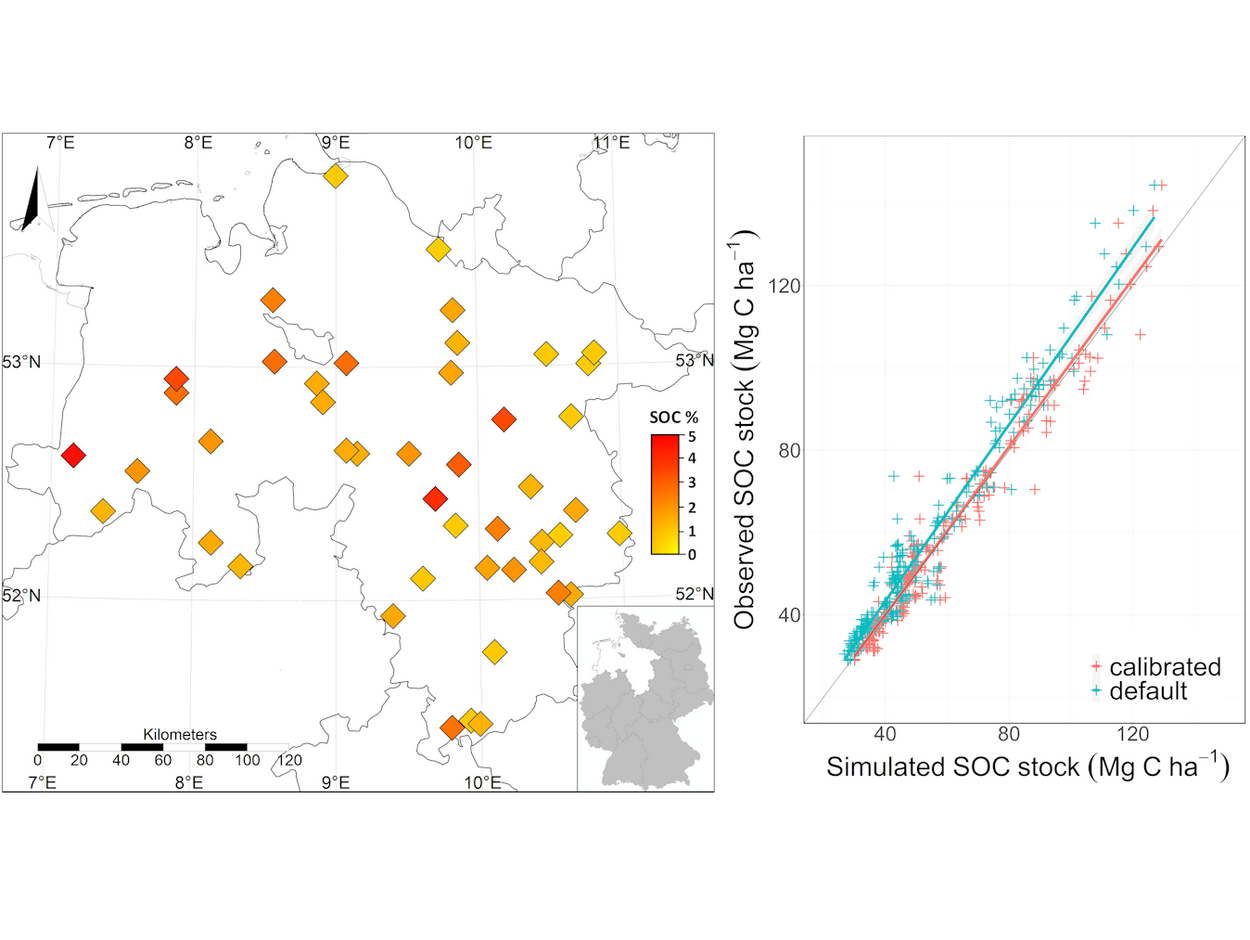In this study we evaluated the process-based biogeochemical model MONICA (Model of Nitrogen and Carbon dynamics on Agro-ecosystems) with respect to soil organic carbon (SOC), using long-term monitoring data from 46 German agricultural sites. While working with the MONICA model, we noticed that the SOC mineralisation rates were systematically overestimated. Subsequently, we started to revise the equations for the abiotic factors for soil temperature, soil water and clay content and the handling of the crop- and fertilizer-specific C contents. The modified version was also used for a Morris elementary effects screening method, which confirmed the importance of environmental and management factors to the model's performance. The model was then calibrated by means of Bayesian inference, using the Metropolis–Hastings algorithm. The performance of the MONICA model was compared with that of five established carbon turnover models (CCB, CENTURY, C-TOOL, ICBM and RothC). The modification and calibration significantly improved its performance, reducing the MAE by ∼30 %. Consequently, MONICA outperformed CENTURY, CCB and C-TOOL, and produced results comparable with ICBM and RothC. Use of the modified model allowed mostly adequate reproduction of site-specific SOC stocks, while the availability of a nitrogen, plant growth and water submodel enhanced its applicability when compared with models that only describe carbon dynamics.
Scroll to top

![[Translate to English:] [Translate to English:]](/media/_processed_/6/4/csm_titel_CO2Kampagne8_afeea2273e.png)
![[Translate to English:] [Translate to English:]](/media/_processed_/4/1/csm_titel_93px_CO2Kampagne8_9b0f3354d4.png)






